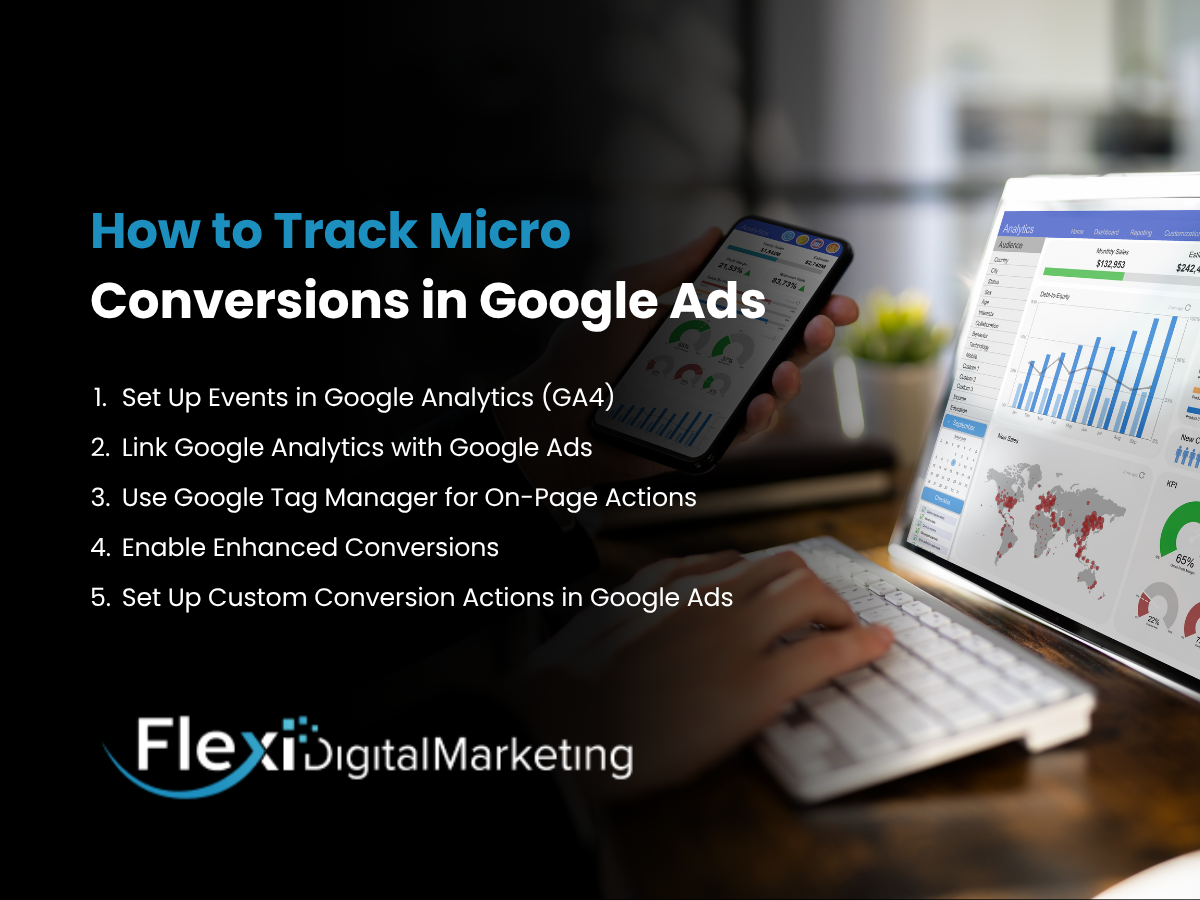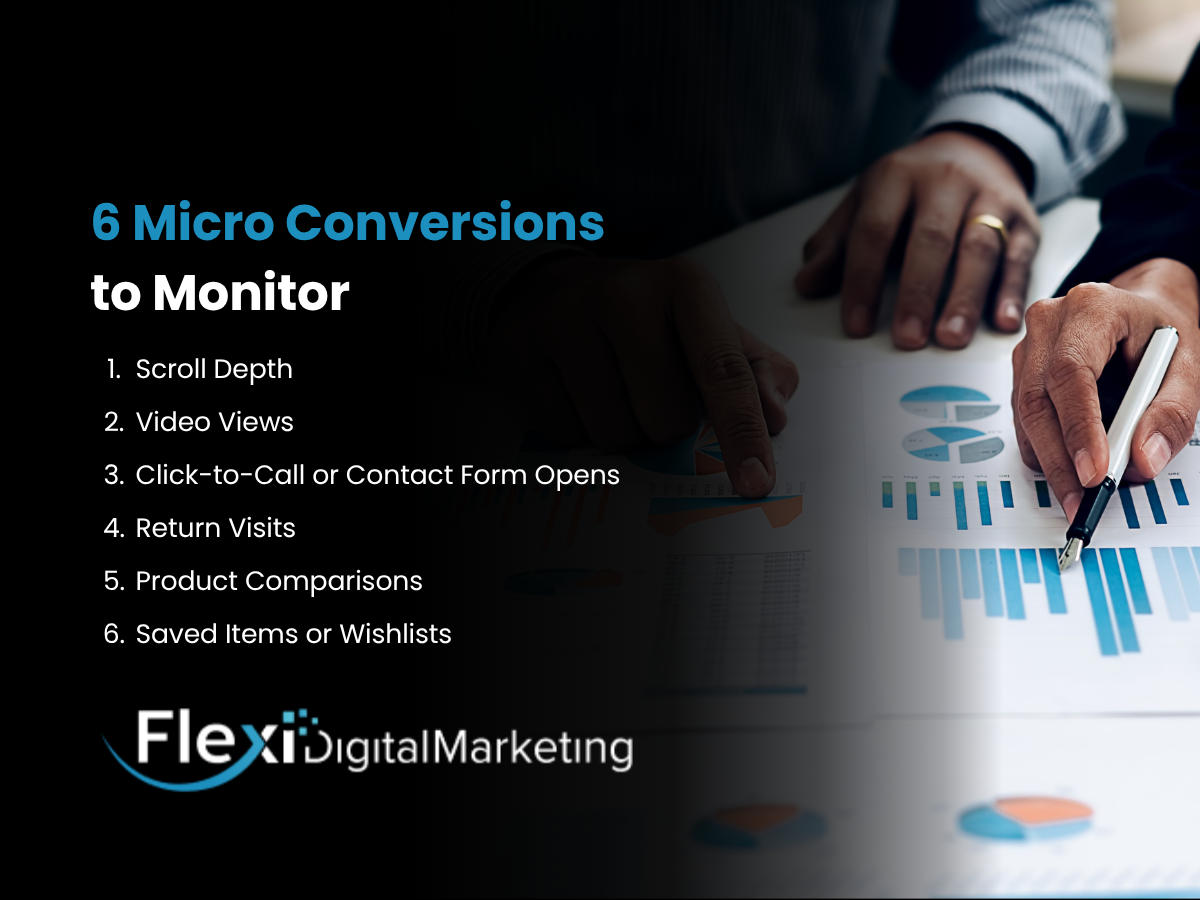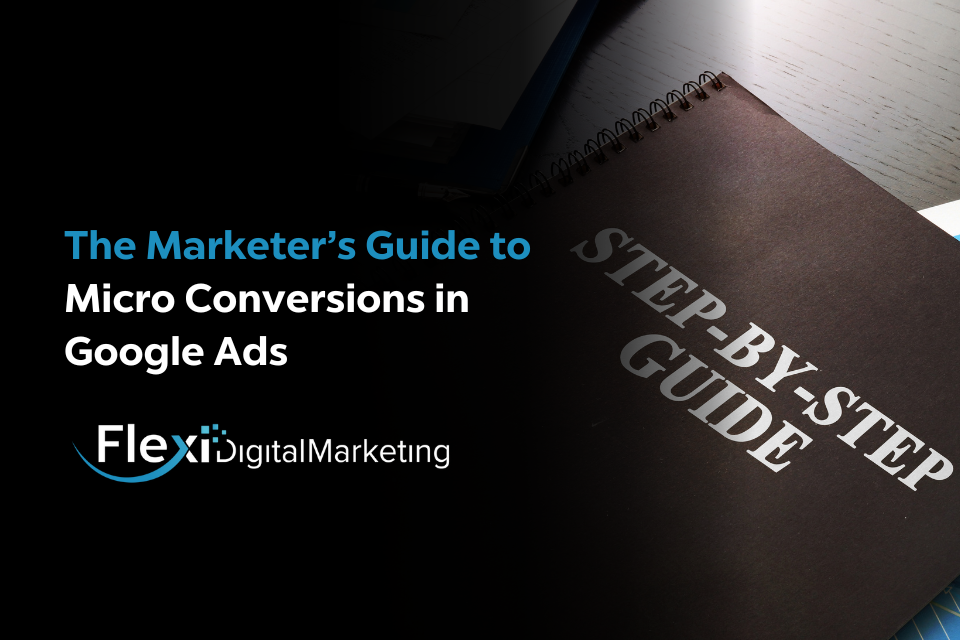When it comes to measuring success in Google Ads, most marketers tend to focus solely on the big win—purchases, sign-ups, or demo bookings. But what about the small steps users take before they convert?
Welcome to the world of micro conversions—the subtle signals that show a potential customer is warming up to your offer. With the growth of digital marketing, these small actions matter more than ever. They may not be as exciting as a final sale, but they often lead to better results.
In this guide, we’ll break down what micro conversions are, why they matter, and how you can use them to improve your Google Ads strategy.
What Are Micro Conversions?
Micro conversions are small actions users take on your site that indicate interest or engagement. Think of them as digital breadcrumbs that show someone is on the path to becoming a customer. Some examples include:
- Adding a product to the cart
- Signing up for a newsletter
- Downloading a guide or brochure
- Spending a certain amount of time on a page
- Watching a product video
- Clicking on key site elements like FAQs or reviews
While they’re not the final goal, they reveal buying intent—and that’s gold for performance marketers.
Why Micro Conversions Matter in Google Ads
Here’s the truth. Most users don’t convert on their first visit. That’s why tracking only macro conversions means you’re missing a huge chunk of valuable data. Micro conversions help you:
- Understand user behaviour earlier in the funnel
- Identify drop-off points in your campaigns
- Build better remarketing audiences
- Optimise ad copy and landing pages based on real user engagement
- Make smarter bidding decisions using signals of interest
Think of micro conversions as your early warning system—they alert you when users are interested, confused, or about to bounce.
How to Track Micro Conversions in Google Ads
To get started, you’ll need to define what actions matter most for your business. Once you’ve mapped the customer journey, you can begin tracking the moments that matter.

1. Set Up Events in Google Analytics (GA4)
Micro conversions need to be measurable, and that starts with setting up the right events in GA4. Track actions like video views, downloads, or time spent on key pages. This gives you a clear view of how users interact before making a decision.
2. Link Google Analytics with Google Ads
When your platforms are connected, your micro conversion data flows seamlessly into your Google Ads account. This empowers your campaigns to optimise based on real behaviour, not just final conversions. You’ll start seeing the full customer journey in one place.
3. Use Google Tag Manager for On-Page Actions
Google Tag Manager is your best friend for monitoring on-page activity without touching the site code. Set up tags to track when users click buttons, scroll to a certain point, or download a file. These insights help pinpoint what’s working—and what needs work.
4. Enable Enhanced Conversions
Enhanced conversions help bridge data gaps by securely sending first-party data for more accurate tracking. This feature improves your ability to attribute conversions, especially when cookies fall short. The result? Smarter bidding and clearer performance metrics.
5. Set Up Custom Conversion Actions in Google Ads
You don’t have to rely solely on GA4—Google Ads allows you to define your own conversion actions too. Custom conversions let you focus on key touchpoints that matter to your funnel. It’s perfect for tracking micro moments unique to your business model.
Note: Once everything is in place, you’ll have a much richer picture of what leads users to convert or bounce. Micro conversion tracking adds depth to your data, so you can make decisions based on intent, not assumptions.
6 Micro Conversions to Monitor
Not every user action leads directly to a sale—but that doesn’t mean it isn’t valuable. Micro conversions are the small but meaningful steps that show a user is moving closer to taking action.

1. Scroll Depth
Are users actually reading through your content or leaving quickly? Monitoring how far visitors scroll helps you understand engagement levels and identify if your messaging or design needs improvement. If many drop off early, it’s a clear sign to make your pages more captivating or easier to navigate.
2. Video Views
Watching a product video all the way through is a strong indicator of genuine interest. It means users want to learn more about your product and are visualising how it fits their needs. Videos that hold attention often boost the chances of a purchase or further interaction.
3. Click-to-Call or Contact Form Opens
This action often marks the crucial step before making a direct enquiry or sale. It shows users are actively seeking more information or personalised support, signalling high intent. Ensuring these touchpoints are easy to use and responsive can dramatically increase conversions.
4. Return Visits
Visitors who come back are showing they’re seriously considering your brand or product. Return visits suggest they’re comparing options or waiting for the right moment to commit. By nurturing these users with targeted content marketing, offers, or helpful resources, you can tip the scales in your favour.
5. Product Comparisons
When users spend time comparing features, specs, or prices, it’s a sign they’re narrowing down their choices. This kind of detailed exploration means they’re close to a decision but need reassurance. Use this insight to provide timely, relevant information that removes last-minute doubts.
6. Saved Items or Wishlists
Adding products to a wishlist or saving them for later is a clear “maybe” from your customers. It indicates they’re interested but might be waiting for the right deal or more time to decide. Targeting these users with reminders or special offers can convert their interest into a sale.
Note: Track the right micro conversions, and you’ll unlock powerful insights about what really motivates your audience. These small actions add up, revealing the hidden journey behind every big purchase decision.
How to Optimise Google Ads with Micro Conversion Data
Big wins do not always come from big actions. Sometimes the small signals, such as clicks, scrolls, or time on page, reveal where you should focus your efforts to achieve better results.

1. Refine Your Audiences
Use micro conversions to identify people who are already interested. Build custom groups from these users and target them with remarketing ads. This helps you focus your budget on high-potential leads, making your campaigns more effective and cost-efficient.
2. Improve Ad Messaging
Tailor your copy based on where users dropped off in the funnel. Address specific doubts or questions that caused hesitation, turning friction into motivation. When ads speak directly to user concerns, engagement and click-through rates naturally improve.
3. Adjust Bidding
Prioritise keywords and placements that lead to strong micro conversion rates. Shifting budget towards high-performing areas maximises impact and avoids wasting spend on low-intent traffic. Smart bidding helps you win the auctions that matter most to your business.
4. Test Landing Pages
If people aren’t taking small actions, it’s time to tweak the experience. Experiment with layout, copy, or calls-to-action to make the next step clearer and easier to complete. Continuous testing uncovers what truly resonates with your audience and drives engagement.
5. Use Automation
Let Google’s smart bidding strategies learn from micro conversion signals. Automation can react faster and more precisely than manual adjustments, optimising bids based on real-time user intent. This helps you stay competitive while freeing up time for strategy.
Final Thoughts
Micro conversions might seem small on their own, but together, they paint a powerful picture of user intent and journey. For those offering digital marketing solutions, paying close attention to these subtle signals helps uncover what’s working, what’s missing the mark, and where to invest more wisely.
With the right tracking and optimisation in place, micro conversions transform your Google Ads strategy from guesswork to precision—helping you connect with high-intent users earlier and guide them more effectively toward that final, valuable conversion.
Want to maximise your ad performance and understand your audience better? Contact us today and let us help you set up and optimise micro conversions—turning signals of intent into measurable results.


